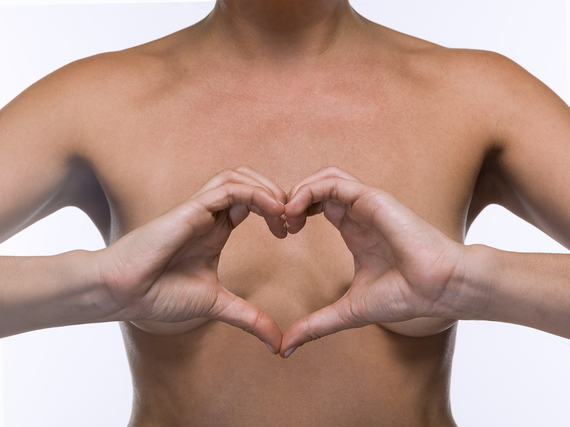Nausea and indigestion struck my cousin first. Like many women in the early stages of a heart attack, Micki didn't think she felt bad enough to seek medical attention.
But when her symptoms escalated to include feeling hot, even though the weather was cold, and pain in her arms, back and chest, Micki's brother insisted on taking her to the hospital. She went into cardiac arrest shortly after arriving and died within 30 minutes.
She was only 53.
February is American Heart Month -- an important opportunity to talk about how sneaky the symptoms of heart disease can be, especially in women. The American Heart Association estimates that heart disease affects 44 million women in this country, and studies indicate that the incidence of heart attacks rises notably about 10 years after menopause.
As a nurse, I have cared for hundreds of heart patients over the years. Still, my awareness of the particular risk that women in midlife face intensified tremendously when Micki died in 2012. I got another wake-up call a few years ago when a family friend was found dead on her bedroom floor just hours after lying down with signs of what she thought was the flu.
That, too, was a heart attack.
Even if you take nothing else from this post, please understand: A heart attack may not feel like a heart attack. The expected sensation of an elephant suddenly sitting on your chest may never come. Thirty-five years of research on women who suffered heart attacks found in 2007 that at least 30 percent did not experience chest pain.
Chest pain is still the most common sign of a heart attack, but studies have shown that women are more likely than men to have other symptoms instead.
Symptoms may appear slowly, come and go, and include the following:
• Digestive Changes. This may start with basic indigestion and escalate to severe heartburn, nausea, and vomiting.
• Shortness of Breath. An early warning sign may be windedness with minimal exertion.
• Unusual Fatigue or weakness. Take note if you wake up with extreme fatigue and then experience difficulty carrying out your daily activities.
• Blurry Vision and Headaches. These symptoms are particularly significant if accompanied by a cold sweat or clammy, pale skin.
And, of course, you should be on the lookout for:
• Discomfort in Your Chest, Arms, or Hands. Pay attention if you experience pressure, discomfort, burning, pain, or symptoms like a pulled muscle in your chest. And you may be facing an impending heart attack if this increases to crushing chest pain radiating down either arm or unusual pain in your jaw, neck, or shoulder.
I share this information to empower you, not to make anyone feel helpless. There is much you can do to protect yourself -- starting with scheduling an appointment with your healthcare provider to discuss risk factors, such as your lifestyle, family history and cholesterol levels.
You can find prevention advice and also study up on your own, using resources on the American Heart Association website at www.heart.org.
